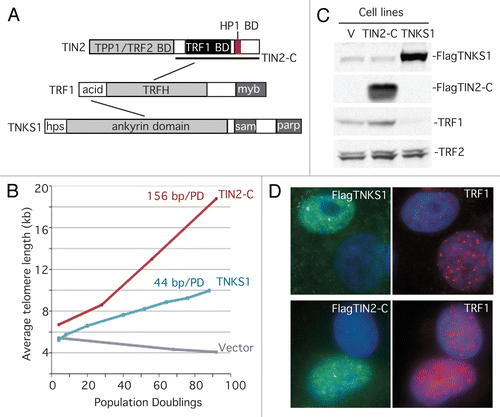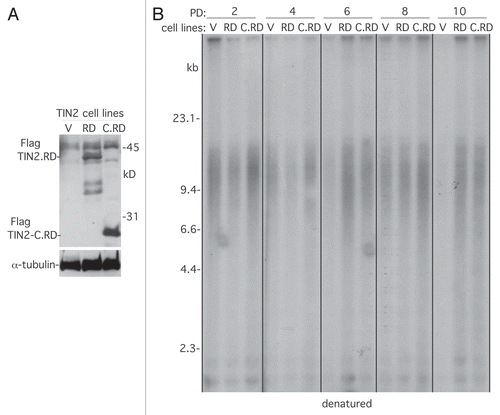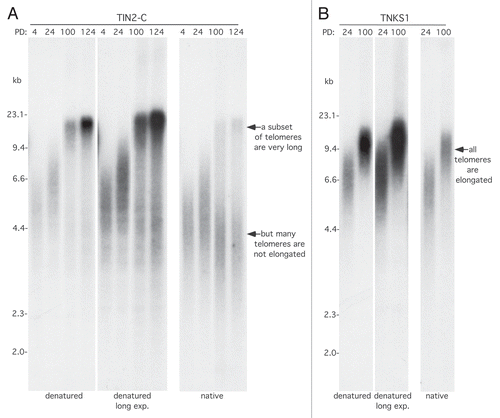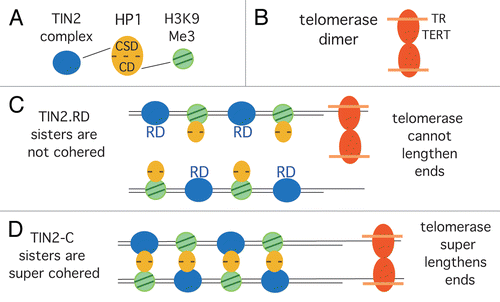Figures & data
Figure 1 TIN2-C and FN-tankyrase 1 induce telomere lengthening by different mechanisms. (A) Schematic diagrams of TRF1 and its binding partners, tankyrase 1 (TNKS1) and TIN2. (B) Graphical representation of telomere length changes in stable HTC75 cell lines overexpressing TIN2-C, FNtankyrase 1 (TNKS1), or vector. (C) Immunoblot analysis of the stable lines probed with antibodies against TNKS1, TIN2, TRF1 or TRF2. (D) Immunofluorescence analysis of transiently transfected HeLaI.2.11 cells costained with antibodies against Flag (green) and TRF1 (red) and DAPI (blue).

Figure 2 Telomere shortening by the TIN2.RD mutation depends on telomerase. (A) Immunoblot analysis of IMR90 stable cell lines expressing TIN2. RD, TIN2-C.RD and vector, probed with antibodies against TIN2 or α-tubulin. (B) Analysis of telomere restriction fragments isolated from the stable IMR90 cell lines at the indicated PD, fractionated on agarose gel, denatured and probed with a 32P-labeled CCCTAA probe.

Figure 3 All telomeres are not elongated in TIN2-C cells. (A and B) Analysis of telomere restriction fragments isolated from the stable HTC75 cell lines expressing TIN2-C (A) or FN-tankyrase 1 (TNKS1) (B) at the indicated PD. Samples were fractionated on agarose gel and probed with a 32P-labeled CCCTAA probe under native and denatured conditions.

Figure 4 Schematic diagram showing how sister telomere cohesion could influence telomere elongation by telomerase. (A) HP1 promotes cohesion between sister telomeres by binding to TIN2 via its chromo shadow domain (CSD) and to H3K9Me3 via its chromodomain (CD). (B) Telomerase as a dimer with two molecules of TERT and two of the RNA (TR). (C) In TIN2.RD mutant cells, HP1 cannot bind to TIN2.RD, and cohesion is not established. Dimeric telomerase cannot efficiently elongate single sisters, and telomeres shorten. (D) In TIN2-C cells, HP1 has increased binding sites to TIN2, leading to super cohesion. Dimeric telomerase efficiently elongates cohered sisters, and telomeres are super elongated.
